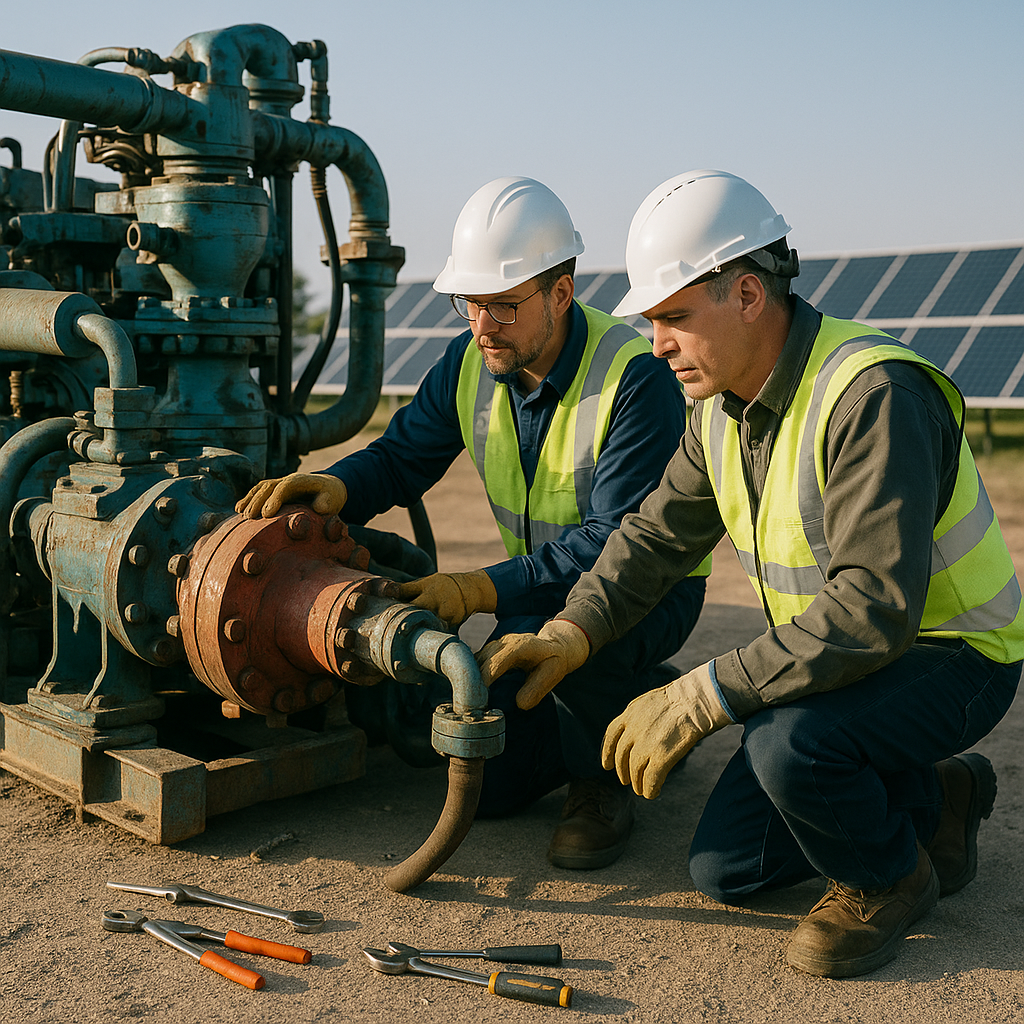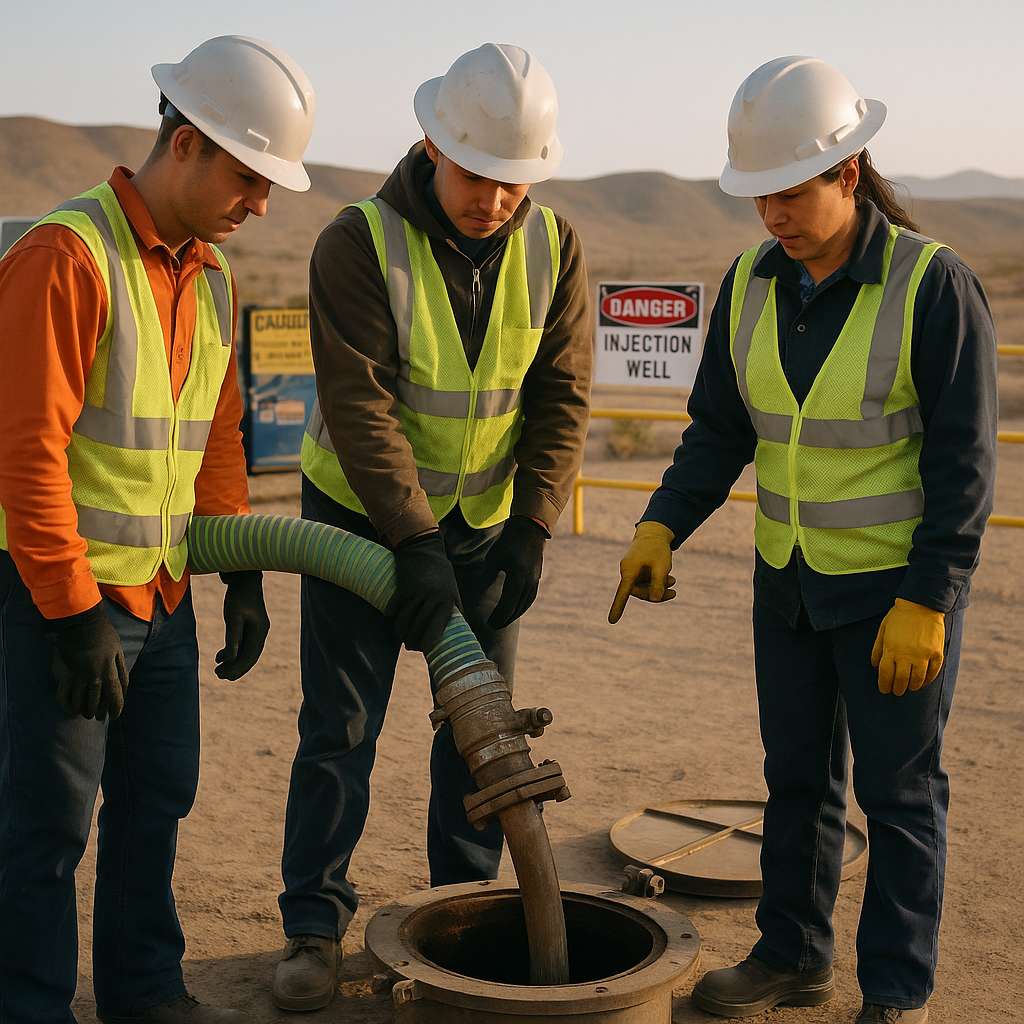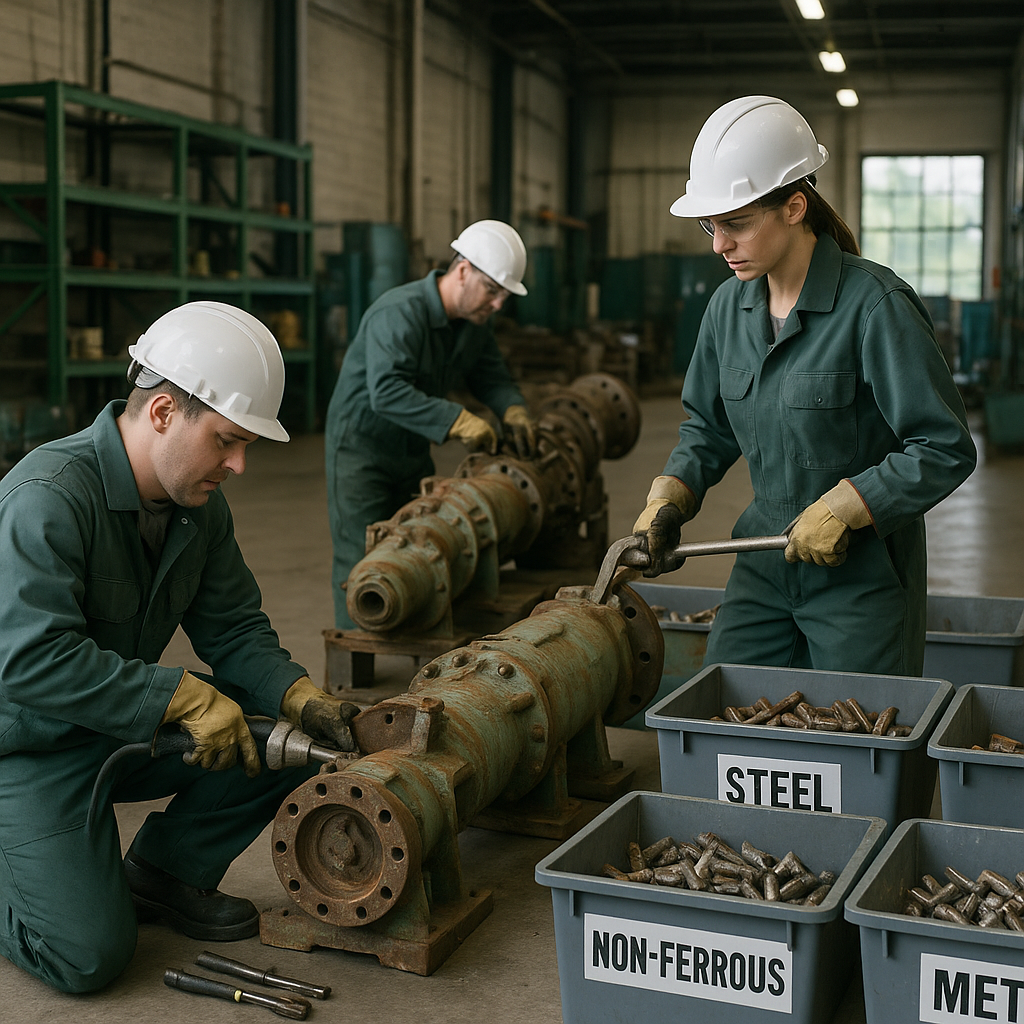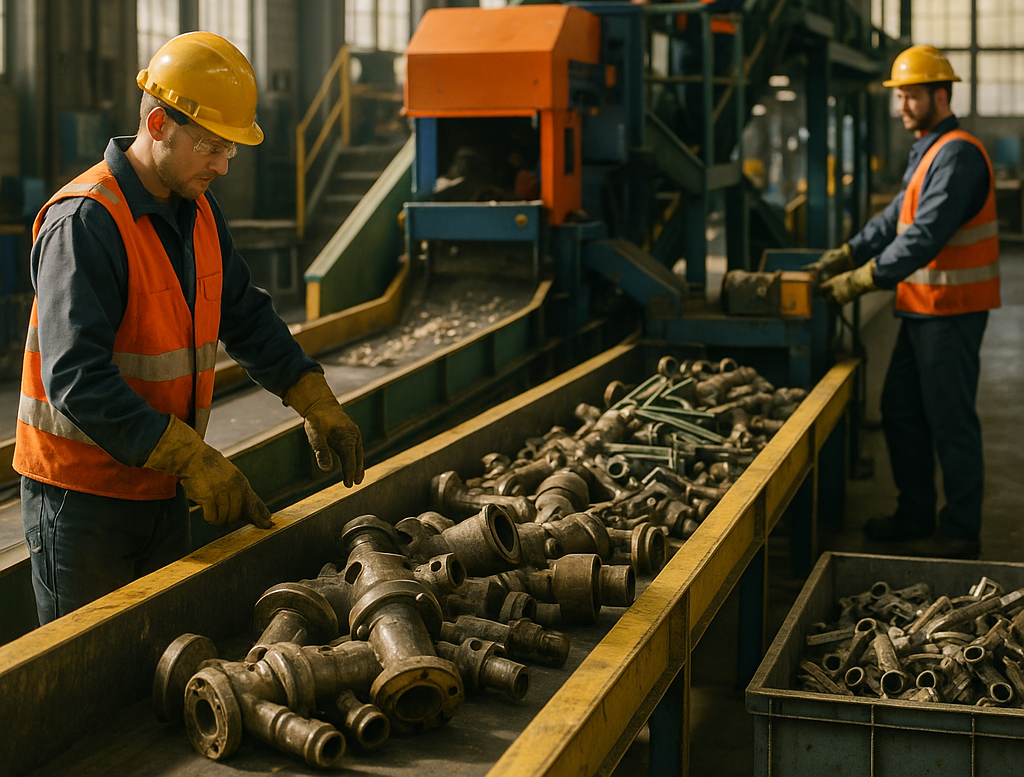5901 Botham Jean Blvd, Dallas, TX 75215
What Are the Challenges of Recycling Old Fracking Equipment?
August 6, 2025The oil and gas industry generates a large amount of used fracking equipment annually. Recycling these materials presents significant challenges due to chemical contamination from hydraulic fracturing fluids and produced water. These items often contain high levels of toxic substances, radionuclides like radium-226 and radium-228, along with other hazardous pollutants that require specialized handling.
Traditional waste management approaches like landfill disposal are increasingly seen as inadequate and environmentally problematic. These methods not only risk leaching contaminants into groundwater but also contribute to greenhouse gas emissions through methane release. The considerable volume of fracking waste compounds this issue, as each well consumes several million gallons of water and chemicals during its operational lifetime.
Communities near disposal sites face potential health and environmental risks. As awareness of these concerns grows, industry stakeholders, regulators, and environmental groups recognize the urgent need for more sustainable solutions that protect public health while managing this complex waste stream effectively.
What are innovative methods for repurposing fracking equipment?

The oil and gas industry generates substantial amounts of specialized equipment that can be repurposed when operations cease or technology evolves. Converting these valuable assets into new applications offers significant environmental and economic benefits. Here are some innovative approaches to fracking equipment repurposing.
Converting Mobile Equipment into Stationary Processing Systems
Transforming mobile machinery into fixed processing systems is a practical approach to repurposing fracking equipment. Fracking pump trucks, initially designed for high-pressure fluid injection, can be converted into stationary water treatment facilities for industrial applications. This typically involves removing the transportation components while keeping the valuable pumping systems intact.
An example from the Permian Basin showcases an operator converting aging fracking pump trucks into stationary water recycling systems. This transformation reduced their freshwater requirements by 50% and saved approximately $175 per barrel of processed water compared to traditional disposal methods. The stationary systems also require less maintenance than their mobile counterparts, extending operational life by 5-7 years.
Component Harvesting and Reuse
Fracking equipment contains many valuable components that can be salvaged and reused even when the original machinery reaches the end of its service life. High-grade stainless steel fittings, specialized valves, and electronic control systems retain substantial value. Companies specializing in parts reclamation can extract these components to support other operations or sell them to equipment manufacturers.
The hydraulic systems from fracking equipment are particularly valuable for repurposing. Designed to withstand extreme pressures and harsh conditions, these systems can be adapted for use in construction equipment, manufacturing machinery, or agricultural applications. Salvaging hydraulic components from a single fracking unit can recover up to 30% of the original equipment value while reducing the need for new manufacturing.
Static Conversion for Material Processing
Old excavators and other heavy equipment used in fracking operations can be repurposed as static material processors. By removing mobility components and repurposing the powerful hydraulic systems, these machines can become crushers, shredders, or compactors. This conversion typically costs 20-30% less than purchasing new processing equipment.
For instance, a recycling facility in Texas converted decommissioned fracking excavators into static material processors, saving about 30% compared to buying new crushers. The conversion involved removing the undercarriage and mobility systems while adapting the hydraulic arms and power units for material handling. These converted units have demonstrated comparable performance to purpose-built systems while significantly reducing capital expenditure.
Training and Educational Applications
Outdated fracking equipment offers significant value for training purposes. Technical schools and industry training centers can use decommissioned equipment to provide hands-on experience without the costs and risks associated with active machinery. This approach not only extends the equipment’s useful life but also enhances workforce development.
Several technical colleges in oil-producing regions have acquired donated fracking equipment to create realistic training environments. Students gain practical experience with industry-standard systems without the pressure of working on operational equipment. These programs report that hands-on training with actual equipment reduces the learning curve for new technicians by up to 40% compared to simulation-only approaches.
Innovative Artistic and Community Projects
Some communities creatively repurpose fracking equipment by transforming industrial components into public art or functional community spaces. Steel components, like the distinctive shapes of pump parts and structural elements, can become striking sculptures that acknowledge the industrial heritage of oil-producing regions.
These artistic projects not only prevent materials from entering landfills but also create cultural landmarks that can support tourism and community identity. One project in Oklahoma transformed decommissioned equipment into an interactive playground and educational exhibit, attracting visitors while providing context about the region’s energy history.
As environmental considerations and cost pressures continue to influence the oil and gas industry, these innovative repurposing approaches are likely to become more common. Companies that develop systematic programs for equipment evaluation and repurposing can realize substantial financial benefits while contributing to more sustainable industry practices. The potential for creative reuse extends far beyond these examples, with new applications emerging as technology and needs evolve.
How can fracking waste be safely disposed of through injection wells?

Deep well injection is one of the most effective methods for disposing of liquid waste from hydraulic fracturing. This process involves placing wastewater into geological formations thousands of feet below the surface, safely away from drinking water sources. Class II injection wells are specifically engineered to manage oil and gas industry waste, including the brine produced during fracking.
The science behind injection wells is straightforward yet sophisticated. They target deep, porous rock formations capable of accepting and containing injected fluids, typically sandstone with high porosity. These formations are naturally sealed by impermeable rock layers, like shale, preventing upward waste migration.
Class II wells have multiple safeguards to ensure waste containment. Construction begins with steel surface casing, cemented from below the deepest drinking water source to the surface, creating the first protective barrier. Additional casings are installed and cemented at key sections to further isolate the injection zone. Operators then install injection tubing and a packer, creating a monitored space (annulus) that immediately reveals any leaks.
Regulatory oversight of these wells is thorough. Before approval, regulators assess factors like site geology, waste fluid characteristics, and well construction details. The operator must demonstrate the well’s mechanical integrity through rigorous testing. During operation, continuous monitoring of injection pressure, volume, and component integrity ensures waste remains contained within the authorized zone.
When properly managed, deep well injection offers significant environmental benefits over surface disposal methods. The wastewater is returned to formations similar to those where it naturally occurred, often at depths of 4,000-10,000 feet. This permanent sequestration isolates contaminants from drinking water sources and minimizes surface impacts.
Well operators must adhere to strict federal and state regulations governing construction standards, operational parameters, and ongoing testing. When a well reaches the end of its life, closure procedures include placing cement plugs at strategic intervals to permanently seal the well, preventing future fluid migration.
This combination of proper site selection, engineered safeguards, continuous monitoring, and regulatory oversight makes deep well injection through Class II wells an environmentally protective solution for managing fracking wastewater.
What are the environmental benefits of recycling fracking equipment?

Recycling and repurposing fracking equipment provides significant environmental benefits. Proper recycling of obsolete or damaged equipment notably decreases waste sent to landfills. The oil and gas industry generates substantial equipment waste, making diversion from disposal sites crucial to preserve landfill space and prevent environmental harm.
Resource conservation is another key benefit. Manufacturing fracking equipment requires large quantities of raw materials like steel and aluminum. Recycling these components conserves finite natural resources and lessens the environmental disruption linked to mining. Additionally, the recycling process generally uses much less energy than manufacturing new equipment from raw materials.
A notable advantage is the reduction of carbon footprint. Producing new fracking equipment results in considerable greenhouse gas emissions from raw material extraction and processing. Recycling bypasses many of these processes. For example, recycling steel—a common material in fracking equipment—can cut energy consumption by up to 60% compared to new steel production.
Proper recycling also prevents hazardous materials from contaminating soil and water. Fracking equipment often includes chemicals and substances that pose risks if not disposed of properly. Professional recycling ensures these materials are safely managed, neutralized, or reused.
Besides waste reduction and pollution prevention, recycling fracking equipment contributes to a more circular economy within the oil and gas sector. Repurposing components extends equipment life and helps companies adopt more sustainable practices. This aligns with industry efforts to lessen environmental impacts while maintaining productivity.
The environmental benefits extend beyond recycling. Companies that adopt recycling programs often develop broader sustainability initiatives that further reduce their ecological footprint. These initiatives might include enhanced maintenance schedules to extend equipment lifespan and procurement practices that prioritize durability and recyclability.
Conclusion: The future of fracking equipment recycling

As the oil and gas industry faces increasing environmental scrutiny, innovative recycling solutions for fracking equipment have become essential. The industry’s shift toward sustainable practices is transforming how companies manage equipment at the end of its lifecycle. By embracing equipment repurposing, parts salvage, and advanced disposal methods, companies are finding ways to reduce their environmental footprint while also realizing significant cost savings.
The future of fracking waste management lies in circular economy approaches that maximize resource efficiency. Companies that adopt comprehensive recycling programs now will be better positioned to meet increasingly stringent regulations and stakeholder expectations. As technology continues to advance, we can expect more efficient recycling processes and greater recovery rates of valuable materials from used fracking equipment. For assistance with your recycling needs, contact Okon Recycling at 214-717-4083.
